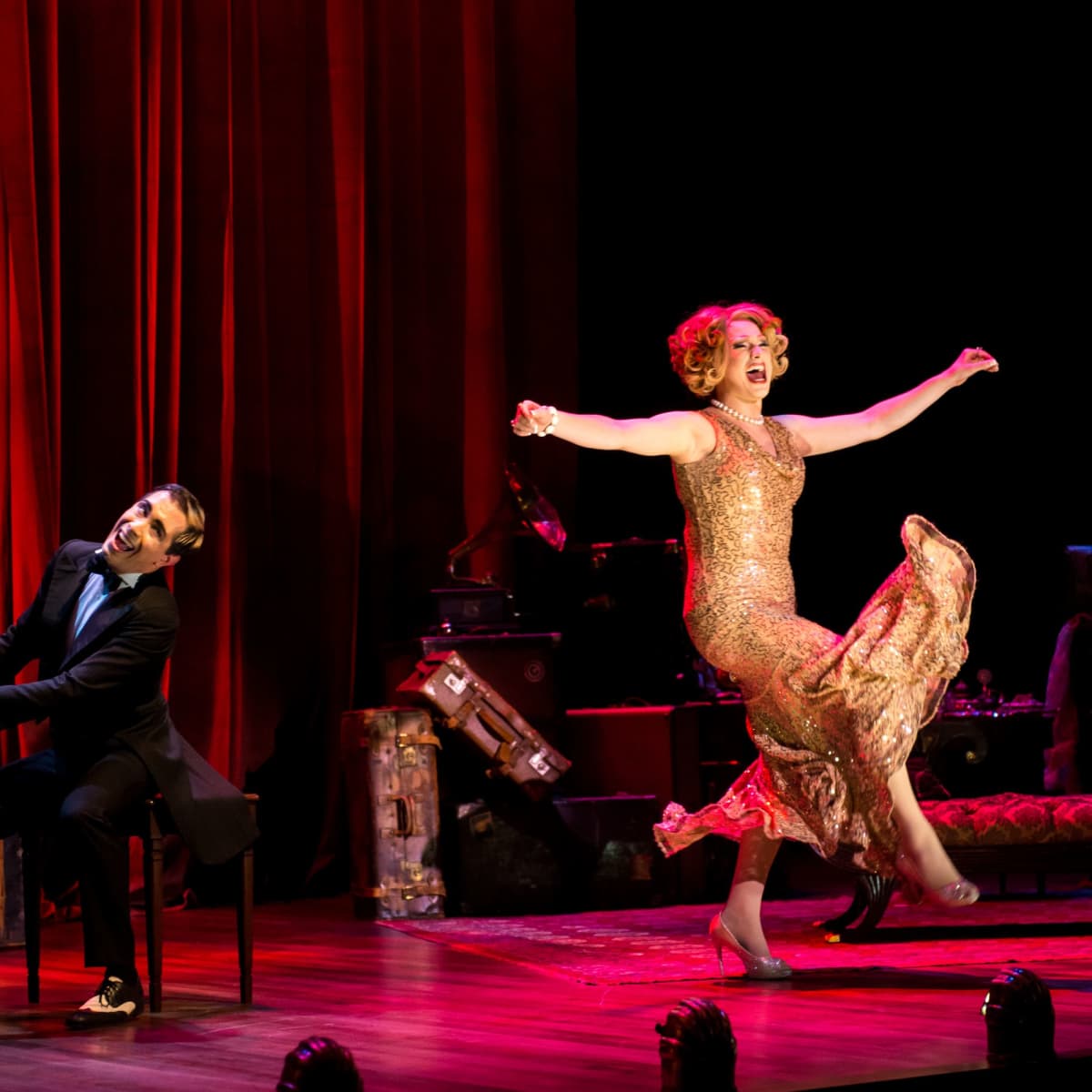Deep Dive
An Old Story Made New: What to know about Don Quixote de la Mancha (1605) to understand Quixote Nuevo (2019)
Octavio Solis’ play Quixote Nuevo is inspired by Miguel de Cervantes Saavedra’s book Don Quixote de la Mancha written in 1605: perhaps the most famous novel ever written in the Spanish language. To understand the play, it is useful to know a little about the original story.
Don Quixote de la Mancha is an episodic journey of an old man stuck between reality and the romantic ideals he has read about in literature all of his life. The man, Alonso Quixano, goes mad and in his senility imagines he has truly becomes a knight-errant or wandering knight named Don Quixote. He enlists the service of a squire in his neighbor Sancho Panza, and, believing every knight should have a lady fair, creates a fictitious lover modeled after a farm girl he once knew. He aims to devote his life to protecting the honor of his lady, Dulcinea. When reality does not match with the world of his imagination, the old knight insists that evil enchanters have bewitched the viewers’ eyes so they cannot see the truth.
Below are some important characters, objects, and terms that appear in both the 1605 and the 2019 retelling of this epic story.
Warning! Potential spoilers ahead.
DON QUIXOTE: The name the old man chooses for himself as a knight-errant.
- 1605: In Cervantes’ original story, he was born Alonso Quixano and lives in La Mancha, Spain with his housekeeper and niece.
- 2019: In Octavio Solis’ adaptation, the old man is called Jose Quijano, or Joe. He is a retired college professor, living along the Texas-Mexico border with his sister, Magdalena, and niece, Antonia. For this Quixote, the threat of assisted living and dementia drives the onset of his madness. Quixote is dubbed a knight in a bar called Rosario’s Lounge and Karaoke Bar he believes to be a castle. The barkeepers, Bruno and Rosario, dub Quixote a knight using the closest thing they have to a religious relic: the petrified trigger finger of Pancho Villa purchased in a pawn shop in El Paso.
SANCHO PANZA: Quixote’s neighbor and sidekick who he convinces to become his squire (or knight’s servant) by promising to make him governor of the first island kingdom he conquers.
- 1605: Sancho leaves his wife and many children with the hopes of returning a wealthy man; he often ends up beaten and bruised for Quixote’s fantasies and mistakes.
- 2019: Manny Diaz is very much in love with his wife and childhood sweetheart, Juana
DAPPLE
- 1605: Sancho Panza’s donkey. Since the short and portly Sancho is not accustomed to walking, he brings his donkey “Dapple” along on the journey.
- 2019: Manny sells ice cream out of a small cart with a donkey sticker on its side.
ROCINANTE
- 1605: Cervantes has Quixote name his horse, a boney fly-bitten old nag, “Rocinante” and imagines him a valiant charger.
- 2019: Joe Quijano also had a horse of that name—it had been his mother’s before her death—but now, as an old man, he has attached the dead horse’s painted skull to the handle bars of his bicycle.
DULCINEA
- 1605: In Cervantes’ story, Quixote’s heart belongs to a woman he calls Dulcinea. Since he has no great love, he creates his idol based on a young farm woman named Aldonza Lorenzo, on whom he may once have had a crush, though she was never aware of it.
- 2019: For Joe Quijano, Dulcinea is a migrant worker he met and fell in love with as a child. She was deported back to Mexico but he exchanged letters with her and remains devoted to the idea of one day finding her and bringing her to the United States.
MAMBRINO’S HELMET
- 1605: A legendary magical golden helmet that would make the wearer invincible. Quixote and Sancho come across a barber who is using his brass shaving bowl to cover his head in the rain and, believing the shiny object is Mambrino’s Helmet, Quixote steals it from him and wears it in battle.
- 2019: In a yard sale, Joe and Manny find a hospital bedpan used by a sick woman who could not get out of bed to go to the bathroom. Convinced it is the magical helmet he has been looking for, Joe takes it, and, wearing the potty on his head like a hat, runs off without paying.
WINDMILLS
- 1605: Thinking he is slaying a giant, Quixote plows his lance into the sail of an enormous windmill and is spun up into the air crashing down with his horse on top of him.
- 2019: For Joe Quijano, the giant he sees is the oppression of a border separating him from his Dulcinea in Mexico. He uses his lance to attack a U.S. government border surveillance balloon.
BALM OF FIERABRÁS
- 1605: An elixir said to be used by medieval knights to cure wounds. When injured, Don Quixote mixes together a home remedy and it makes him vomit and pass out.
- 2019: Without knowing what it is, Joe and Manny take swigs of a strong detox/intestinal cleansing laxative belonging to one of the women they meet in Rosario’s Lounge and Karaoke Bar, resulting in a lot of vomit and diarrhea.
QUESTIONS FOR DISCUSSION
- Why do you think the playwright titled the play Quixote Nuevo?
- Have you ever heard of Cervantes’ novel Don Quixote before attending this production? If so, what are the similarities or differences between both versions of the character Don Quixote? If not, how would you describe Quixote’s personality in the play? What are the most significant characteristics that represent him?
- What do you think the characters Padre Perez and Dr. Campos represent? Do they represent the same ideas or different ideas?
- The character of Padre Perez calls Joe Quijano “a sad and lonely man.” Do you agree? Why or why not?
You now know more about the original, now see the new! Get your tickets to Quixote Nuevo, playing Jan. 19 - Feb. 11, 2024 at Seattle Rep.
Article reprinted with permission from Hartford Stage.
______________________________________________________________________
Un Viejo Cuento Hecho Nuevo:
Que saber sobre Don Quijote de la Mancha (1605) para entender Quijote Nuevo (2019)
De Nina Pinchin
La obra Quijote Nuevo de Octavio Solis es inspirada por el libro Don Quijote de la Mancha escrito por Miguel de Cervantes Saavedra en 1605: es quizás la novela más famosa que se ha escrito en el idioma español. Para entender la obra, es útil conocer algo del cuento original.
Don Quijote de la Mancha es un viaje episódico de un viejo metido entre la realidad y los ideales románticos sobre los cuales ha leído en literatura todo su vida. El hombre, Alonso Quixano, se vuelve loco y en su senilidad se imagina que él realmente se ha convertido en un caballero andante llamado Don Quijote. Él recluta los servicios de un escudero en su vecino Sancho Panza y, creyendo que todo caballero debe tener una hermosa dama, crea un amor ficticio basado en una campesina que conoció alguna vez. Su objetivo es dedicar su vida a proteger el honor de su dama, Dulcinea. Cuando la realidad no se encaja con el mundo de su imaginación, el viejo caballero insiste que encantadores malvados han hechizado los ojos de los espectadores para que no puedan ver la verdad.
A continuación se encuentran algunos personajes, objetos y términos importantes que aparecen tanto en la versión de 1605 como en la reescritura de Solis de 2019 de esta historia épica.
DON QUIJOTE: El nombre que el anciano elige para sí mismo como caballero andante.
- 1605: En la historia original de Cervantes, él nació como Alonso Quixano y vivía en La Mancha, España, con su ama de llaves y su sobrina.
- 2019: En la adaptación de Octavio Solis, el anciano se llama José Quijano, o Joe. Es un profesor universitario jubilado que vive a lo largo de la frontera entre Texas y México con su hermana, Magdalena, y su sobrina, Antonia. Para este Quijote, la amenaza de vivir asistido y la demencia impulsan el inicio de su locura. Quijote es nombrado caballero en un bar llamado Rosario's Lounge and Karaoke Bar que él cree que es un castillo. Los encargados del bar, Bruno y Rosario, nombran a Quijote caballero utilizando lo más parecido a una reliquia religiosa que tienen: el dedo índice petrificado de Pancho Villa comprado en una casa de empeño en El Paso.
SANCHO PANZA: Vecino y compañero de Quijote a quien convence para que se convierta en su escudero (o sirviente de caballero) prometiéndole hacerlo gobernador del primer reino insular que conquiste.
- 1605: Sancho deja a su esposa y muchos hijos con la esperanza de regresar como un hombre rico; a menudo termina golpeado y magullado debido a las fantasías y errores de Quijote.
- 2019: Manny Díaz está profundamente enamorado de su esposa y amor de la infancia, Juana.
DAPPLE
- 1605: El burro de Sancho Panza. Dado que el bajito y regordete Sancho no está acostumbrado a caminar, lleva consigo a su burro "Dapple" en el viaje.
- 2019: Manny vende helados desde un pequeño carrito con una pegatina de un burro en un lado.
ROCINANTE
- 1605: Cervantes hace que Quijote nombre a su caballo, una yegua vieja y flaca llena de moscas, "Rocinante," e imagina que es un valiente corcel.
- 2019: Joe Quijano también tenía un caballo con ese nombre, que había pertenecido a su madre antes de su muerte, pero ahora, como anciano, ha fijado el cráneo pintado del caballo muerto al manillar de su bicicleta.
DULCINEA
- 1605: En la historia de Cervantes, el corazón de Quijote pertenece a una mujer a quien llama Dulcinea. Como no tiene un gran amor, crea su ídolo basado en una joven campesina llamada Aldonza Lorenzo, de quien tal vez estuvo enamorado en el pasado, aunque ella nunca lo supo.
- 2019: Para Joe Quijano, Dulcinea es una trabajadora migrante a la que conoció y se enamoró cuando era niño. Fue deportada de regreso a México, pero él intercambió cartas con ella y permanece dedicado a la idea de encontrarla algún día y traerla de vuelta a los Estados Unidos.
YELMO DE MAMBRINO
- 1605: Un legendario y mágico yelmo dorado que haría invulnerable a quien lo llevase. Quijote y Sancho se encuentran con un barbero que está usando su tazón de afeitar de latón para cubrir su cabeza bajo la lluvia, y al creer que ese objeto brillante es el Yelmo de Mambrino, Quijote se lo roba y lo lleva puesto en la batalla.
- 2019: En una venta de garaje, Joe y Manny encuentran una bacinilla de hospital utilizada por una mujer enferma que no podía levantarse de la cama para ir al baño. Convencido de que es el yelmo mágico que ha estado buscando, Joe la toma y, colocándosela en la cabeza como si fuera un sombrero, se va corriendo sin pagar.
MOLINOS DE VIENTO
- 1605: Creyendo que está enfrentando a un gigante, Quijote clava su lanza en la vela de un enorme molino de viento y es lanzado por los aires, estrellándose con su caballo encima de él.
- 2019: Para Joe Quijano, el gigante que ve es la opresión de una frontera que lo separa de su Dulcinea en México. Utiliza su lanza para atacar un globo de vigilancia fronteriza del gobierno de los Estados Unidos.
BÁLSAMO DE FIERABRÁS
- 1605: Un elixir que se dice que era utilizado por los caballeros medievales para curar heridas. Cuando Don Quijote resulta herido, mezcla un remedio casero que lo hace vomitar y desmayarse.
- 2019: Sin saber lo que es, Joe y Manny toman sorbos de un fuerte laxante desintoxicante/purificador intestinal perteneciente a una de las mujeres que conocen en Rosario's Lounge and Karaoke Bar, lo que resulta en mucho vómito y diarrea.
SUBTÍTULOS ABIERTOS EN ESPAÑOL
Seattle Rep tendrá dos funciones de Quijote Nuevo con subtítulos abiertos en español el 3 de febrero a las 2 p.m. y el 11 de febrero a las 12 p.m. Esta producción se presenta en inglés con momentos ocasionales cuando personajes hablan en español. Durante los funciones de subtítulos abiertos en español, los subtítulos se proverán para todo el diálogo. ¿Busca reservar boletos? Por favor seleccione asientos marcados como “es” para asegurarse de tener la mejor vista de la pantalla de subtítulos.
Republicado con permiso de Hartford Stage.
Traducido por Alejandra Campoy.





